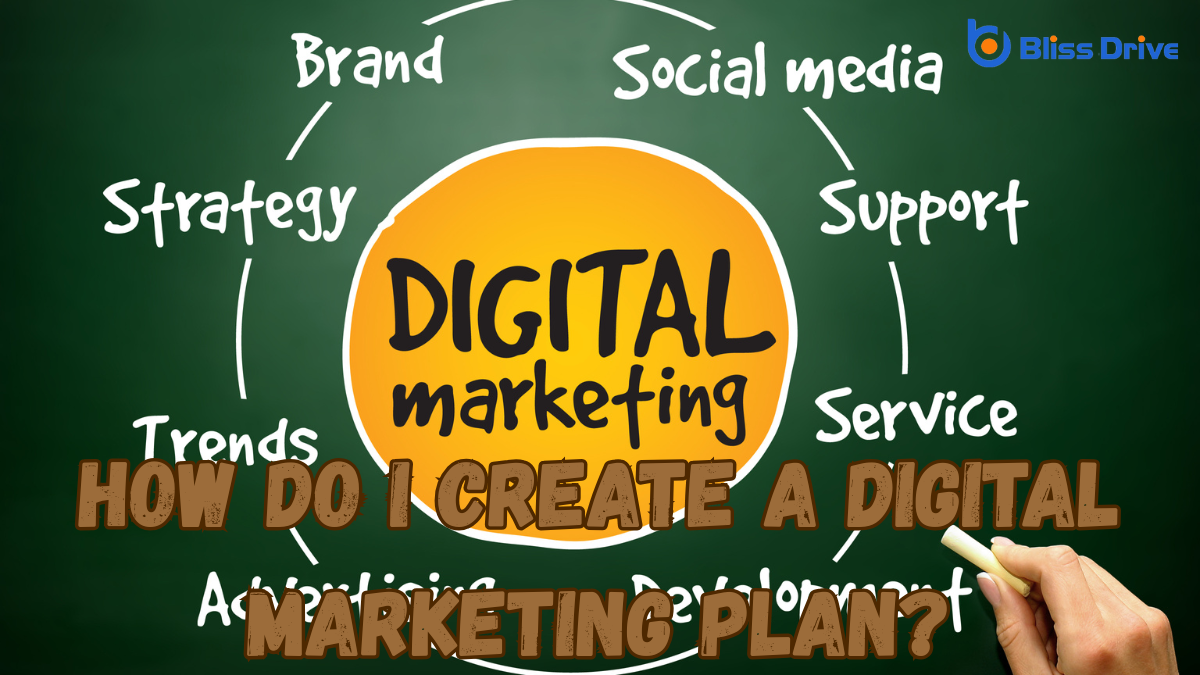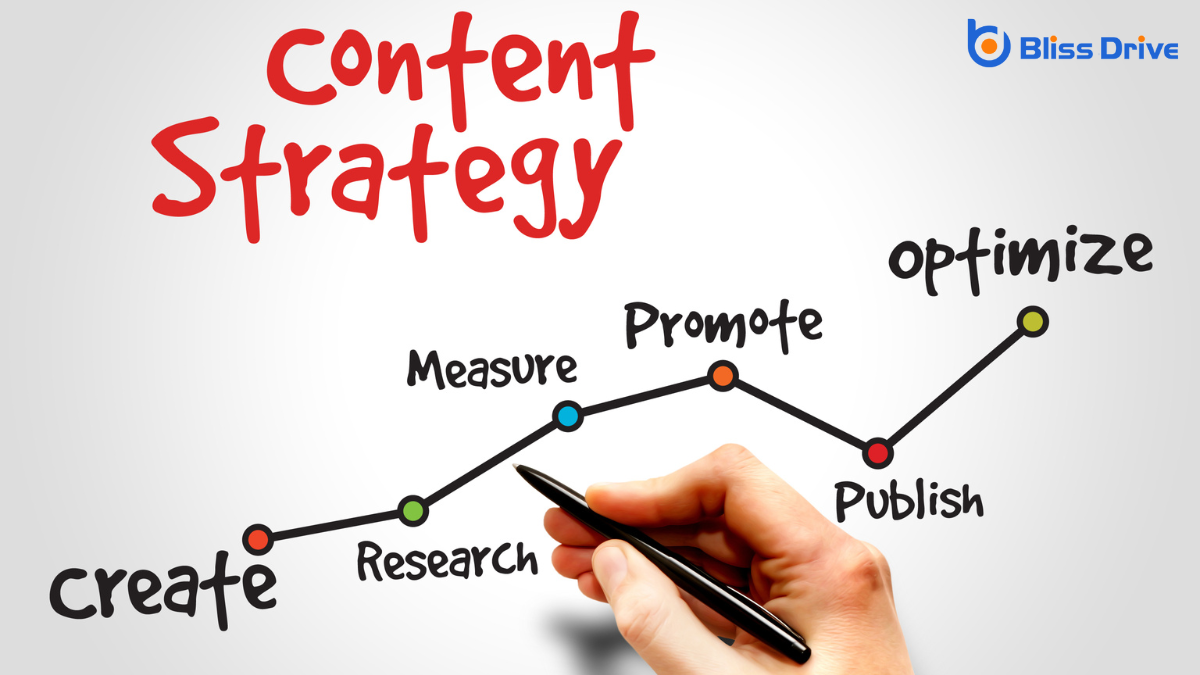Digital Marketing Services
Learn More About Us

Creating a digital marketing plan might seem challenging, but we can break it down into manageable steps. We'll start by defining our business goals and identifying our target audience. Understanding the competitive landscape is vital, as is selecting the right digital channels to reach our audience effectively. Crafting a content strategyA plan for creating, publishing, and managing content to meet business goals. and setting a budget will guide our efforts. Let's explore how these elements come together to drive success.
Before diving into the specifics of a digital marketing plan, let's first focus on defining our business goals.
These goals are the foundation upon which every marketing effort stands. Without clear objectives, our strategies may lack direction and purpose.
We need to ask ourselves, what do we truly want to achieve? Is it increasing brand awarenessThe extent to which consumers are familiar with the qualities or image of a particular brand., boosting sales, or perhaps building a loyal customer base?

Understanding who our target audience is forms the backbone of a successful digital marketing plan. We need to explore who our potential customers are by considering factors like demographics, interests, and online behaviors. Identifying these characteristics helps us tailor content that resonates with them.
Let’s ask ourselves questions: Who benefits most from our product or service? What challenges do they face that we can solve? By answering these, we gather insights into their needs and preferences.
Additionally, utilizing tools like surveys, social media insights, and website analyticsThe systematic computational analysis of data or statistics to gain insights and support decision-ma... paints a clearer picture of our audience. With this understanding, we’ll craft targeted strategies that engage and convert.
To build a robust digital marketing plan, let's conduct a competitive analysis that reveals our position in the market.
Understanding our competitors helps us pinpoint what differentiates us and where we can improve.
Here's how we can break it down:
When selecting the right digital channels for our marketing efforts, it's crucial that we align them with our audience's preferences and behaviors.
We need to ask ourselves where our target audience spends the most time online. Are they scrolling through InstagramA photo and video-sharing social networking service owned by Facebook., engaging on LinkedInA professional networking site used for career and business networking., or watching YouTube videos? Understanding their habits helps us prioritize platforms that maximize our reach and impact.
Let's also consider our goals. If we're aiming to drive website traffic, search engines and social media adsPaid advertisements that appear on social media platforms. might be our best bet.
For brand awareness, visual platforms like Instagram or PinterestA visual discovery and bookmarking platform where users can find and save ideas. could be more effective. We shouldn't spread ourselves too thin; focusing on a few key channels guarantees we can manage them well and measure success effectively.
Choosing smartly sets the stage for our marketing triumph.

To develop a content strategy, we first need to pinpoint our target audience, ensuring we create content that resonates with them.
Next, we'll choose the best platforms to share our content, considering where our audience spends their time online.
Finally, let's organize our ideas with a content calendarA schedule for planning, creating, and publishing content., which helps us maintain consistency and track our progress.
How can we effectively reach and engage our audience? It all starts with identifying our target audience. By understanding who they are, we're better equipped to tailor our content and guarantee it resonates.
Here’s how we can pinpoint our audience:
As we explore developing our content strategy, selecting the right platforms is essential for reaching our audience effectively.
We need to take into account where our audience spends most of their time online. Are they scrolling through Instagram, engaging on LinkedIn, or browsing FacebookA social networking site where users can post comments, share photographs, and links to news or othe...? Each platform serves different purposes and attracts varied demographics, so aligning our content with these preferences is key.
Let’s also think about the type of content we want to share. Should we focus on videos, blogs, or infographicsVisual representations of information, data, or knowledge intended to present complex information qu...? Some platforms, like YouTube, are perfect for video content, while others, like Pinterest, thrive on visually appealing images.
We must evaluate our resources and capabilities. It’s vital to choose platforms we can manage consistently and effectively, ensuring our message resonates with the audience.
Once we've chosen the right platforms for our content, it's time to map out a content calendar that aligns with our goals and audience preferences.
A well-structured content calendar helps us stay consistent, organized, and relevant. Here's how we can start:
Let's set a clear budget by determining our marketing expenses and prioritizing key investments.
It's essential to guarantee that we allocate resources effectively to get the most out of our efforts.
Establishing a clear and realistic budget is essential for the success of our digital marketing plan. It guarantees we're investing wisely and making the most of our resources.
To determine our marketing expenses, let's consider a few key steps:
While crafting our digital marketing plan, we must prioritize key investments to effectively set a budget and allocate resources.
Let’s first identify the most impactful channels and strategies. Which platforms drive the most engagementThe interactions that users have with a brand’s content on social media. for our audience? By focusing on these, we’ll maximize our return on investment.
It’s essential to balance short-term gains with long-term growth. For instance, investing in SEO may not yield immediate results, but it builds a strong foundation for future visibility.
Allocate funds thoughtfully, ensuring each dollar supports our overarching goals. We should also consider the costs of tools and technologies that enhance efficiency.
Understanding where to allocate our marketing resources is just one piece of the puzzle; monitoring financial performance is equally important to confirm our investments are paying off.
By setting a budget and allocating resources wisely, we can track how well our strategies perform financially. Here’s how we can do it:
Tracking financial performance helps us make informed decisions and confirms our efforts yield desired results.
Once we've laid the groundwork for our digital marketing plan, it’s crucial to move swiftly into the implementation and execution phase to guarantee all strategies come to life effectively.
We must make certain that each team member understands their role and responsibilities. This clarity will drive seamless coordination.
Let's schedule regular meetings to track our progress and resolve any roadblocks promptly. Automating repetitive tasks can save time and reduce errors, so leveraging tools like social media schedulers and email marketingThe use of email to promote products or services, build relationships with potential customers, and ... platforms is a smart move.
We should also prioritize maintaining consistent brand messagingThe communication and language used to convey a brand's values, benefits, and personality. across all channels. By sticking to our timeline and adapting to unforeseen challenges, we'll make sure our plan doesn't just stay on paper but actively drives results.

As we move into the monitoring phase of our digital marketing plan, it’s essential to keep a close eye on our performance metricsKey indicators used to measure the effectiveness of affiliate marketing efforts, such as clicks, con... to make sure we're on the right track.
This step guarantees our efforts are effective and our resources are well spent. Let’s focus on four key actions:
In crafting our digital marketing plan, we've set clear business goals and pinpointed our target audience. By analyzing competitors, we're positioning ourselves strategically in the market. We've chosen digital channels that align with audience preferences and have developed a dynamic content strategy. With a set budget and resources allocated, we're ready to implement and execute our plan. We'll continuously monitor performance, analyze results, and adjust our strategies to guarantee we achieve peak success. Let’s make it happen!
